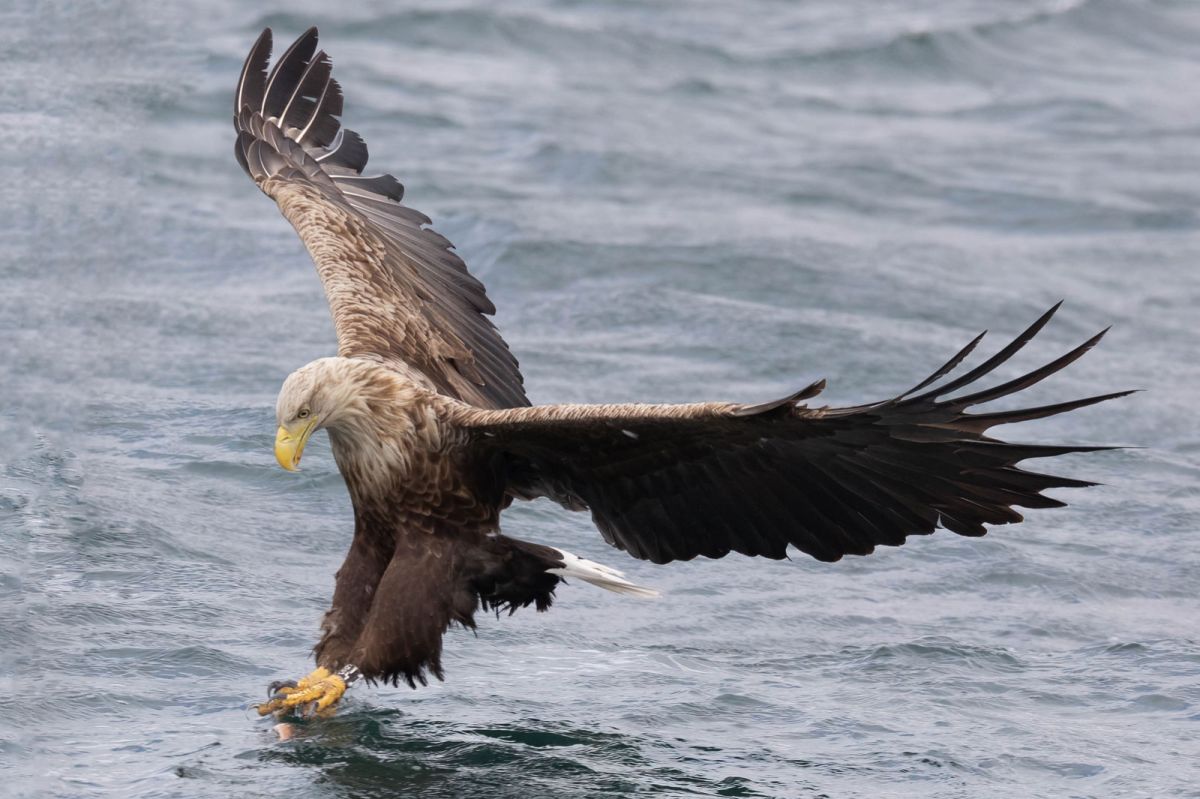Two white-tailed eagles poisoned

One of the young white-tailed eagles had been brought in as a chick in 2022 from Norway under phase two of the white-tailed eagle re-introduction programme, managed by NPWS. He was fitted with a satellite tag so his movements could be followed. After being released – by then Taoiseach Micheál Martin in August 2022 – the young eagle spent a number of months on the Shannon Estuary before starting to travel around the country. He crossed into Northern Ireland from south Donegal on May 1, 2023 and was found dead just two weeks later, alongside an untagged young eagle. The origin of the second dead eagle is unknown, but NPWS staff believe it most likely fledged from a nest in Munster in 2021.
Insecticide poisoning
Investigations by the PSNI recently revealed that both young eagles had died as a result of ingesting an insecticide called bendiocarb. It is not known how the eagles ingested this substance, but it was possibly from eating carrion (a dead animal) or other bait laced with the insecticide, according to the NPWS. According to the substance classification and labelling approved by the European Union, bendiocarb is fatal if swallowed, is toxic in contact with skin and is toxic if inhaled. It is acutely toxic to many animals, particularly to birds, fish and some invertebrates such as bees and earthworms. Its use has been illegal in Scotland since 2005.
Despite their toxicity, bendiocarb, carbofuran and other poisons continue to be used to target wildlife, according to the NPWS. Earlier this year a white-tailed eagle was found poisoned by the illegal insecticide carbofuran in Co Cavan.
White-tailed eagles are a protected species under the Wildlife Act. These birds were persecuted to extinction by the early 1900s but are making a successful comeback due the NPWS reintroduction programme started in 2007.
Positive benefits
The potential for positive economic benefits from the re-introduction of the eagles has been demonstrated in Mountshannon, Co. Clare, when the first breeding pair in Ireland in over a century nested within sight of the village in 2012, attracting thousands of visitors over the following years. Sadly one the Mountshannon pair of eagles died of avian Influenza in 2018. However, there is good news from Mountshannon as the widowed male has paired up with a female released in 2020. The pair hatched two chicks this spring and they are due to fly the nest later this month. Last week the two chicks were ringed and one was fitted with a satellite transmitter. Since 2020, almost all chicks released by the white-tailed eagle project are satellite-tagged, which enables the project to follow their movements as they disperse and establish in new areas and, in cases like this, to determine the locations of any tagged birds which may be in trouble.
Director General of the NPWS Niall Ó ’Donnchú said: “The deliberate poisoning of birds of prey is a heinous crime against nature and an offence under the Wildlife Acts. These birds have no means of detecting that they have been baited and the malice of forethought in these acts doesn’t bear thinking about.”




